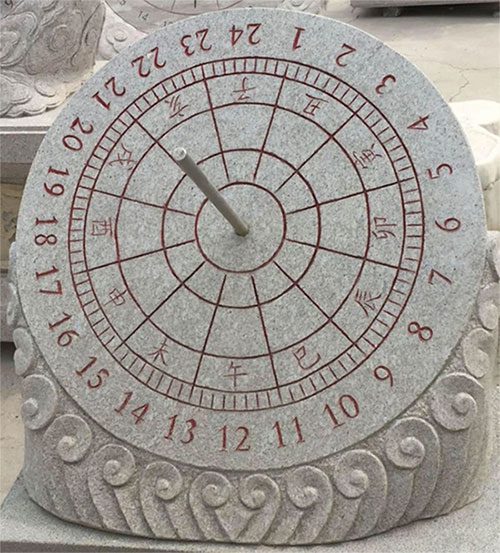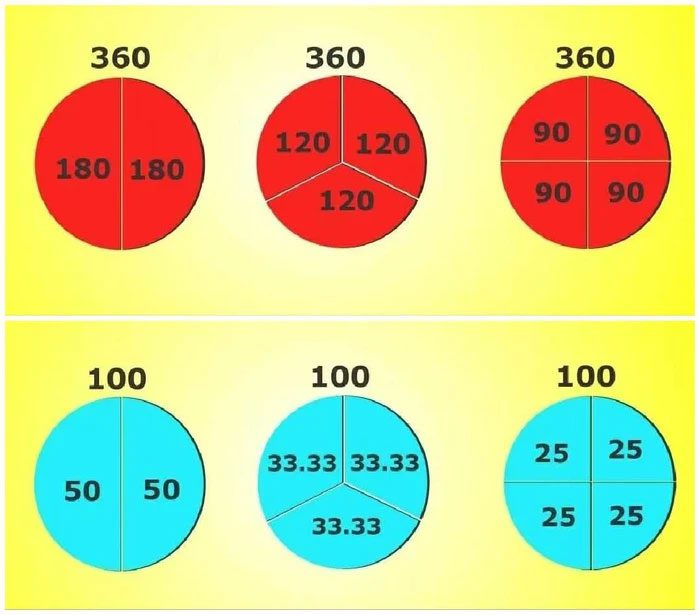There are many viewpoints regarding the origin of 360 degrees, among which there are two main perspectives.
1. Related to Astronomical Calendars
In ancient times, humans used the Sun, Moon, stars, and other natural phenomena to measure time and create calendars. Among these, the position of the Sun was crucial for compiling the solar calendar.
The Sumerians observed the Sun, Moon, and five visible planets (Mercury, Venus, Mars, Jupiter, and Saturn), primarily to seek omens. They did not attempt to understand physical movements. However, they noticed the circular orbit of the Sun’s annual path in the sky and recognized that it took about 360 days to complete a cycle of a year. Consequently, they divided the circle into 360 degrees to track the entire journey of the Sun each day. This likely occurred around 2400 BCE. This is the origin of the earliest 360-degree system.

The number 360 was likely chosen because it corresponds to the number of days in the year for ancient peoples. Primitive calendars, such as the Persian calendar, used 360 days for a year. Its application in measuring angles in geometry can be traced back to Thales, who popularized geometry among the Greeks and lived in western Turkey, engaging with Egypt and Babylon.
2. Related to Base 60
In early times, humans commonly used their fingers for counting, thus the base was 10, known as the decimal system. The Hindu-Arabic numerals are the most widely used symbols to represent numbers. They are regarded as one of the most significant achievements in mathematics, serving as a counting and calculation system based on 10.
However, in ancient times, some civilizations used 60 as the base, known as the sexagesimal system (Base 60 counting system). Base 60 is one of humanity’s ancient counting methods, originating from the ancient Semites in the 3rd century BCE and later spread to Babylon and other regions.
The reason for using 60 instead of other numbers may be because 60 is a relatively small number that can be divided into 10 actual factors of 2, 3, 4, 5, 6, 10, 12, 15, 20, and 30, making the base 60 counting system more flexible for various calculations.
Additionally, the use of base 60 is convenient for drawing with rulers and measuring instruments. In the Eastern lunar calendar, there is the concept of the sexagenary cycle, which combines 6 heavenly stems with 5 earthly branches to create a system of 60.

As Greek geometry developed, it established the concepts of angles and degrees. One of the key figures laying the groundwork for Greek geometry was the mathematician Euclid (who lived in the 3rd century BCE) with his work titled “Elements.”
The base 60 counting method was later spread to Europe by the Arabs, eventually becoming the dominant method, now widely used in time, angles, geographical coordinates, and other fields.
Around 300 to 100 BCE, the Babylonians divided the hour into fractions based on 60: 60 minutes in an hour and 60 seconds in a minute. The base 60 of their numerical system still exists in our divisions of angles and time (1 hour = 60 minutes, 1 minute = 60 seconds, but 1 second = 1000 milliseconds – as milliseconds emerged in modern times and base 10 became the trend at this point).
The reason why a circle’s circumference is 360 degrees instead of 60 degrees is likely due to ancient people discovering that exactly 6 equilateral triangles can be formed with sides equal to the radius of the circle, and the angles of each equilateral triangle are also 60 degrees, thus the 6 triangles create a total of 360 degrees.

One degree is divided into 60 minutes, and one minute into 60 seconds. These units, also referred to as arcminutes or arcseconds, are represented respectively by single or double quotes, or by single or double quotation marks.
Therefore, using 360 degrees to represent angles is more convenient than using 100, as it can be divided into many different angles, all of which are whole numbers, facilitating easier calculations and reducing the likelihood of errors.
In summary, the origin of 360 degrees as a unit of angle can be traced back to ancient civilizations, which had various advantages and significance in aspects such as history, culture, technology, and mathematics, making it an indispensable part of modern science and engineering.
The number 100, while simpler, does not meet these requirements as effectively, leading to 360 degrees becoming the commonly used unit of angle. Although other angle units (such as radians) have their unique application scenarios, 360 degrees, as a universal angle unit, has become the most popular measurement in scientific and engineering fields.


















































